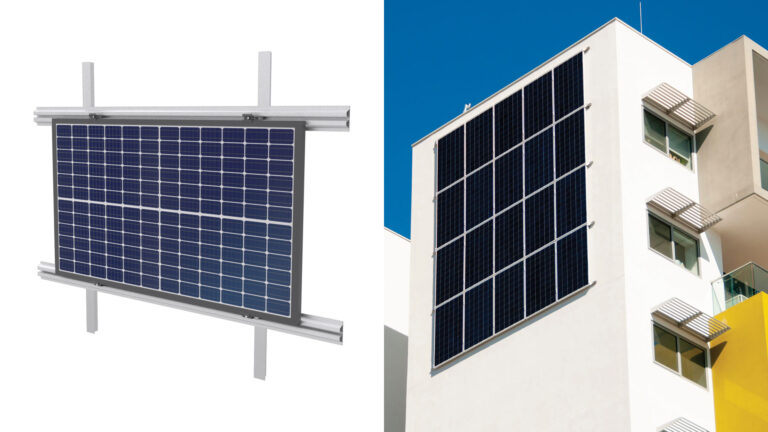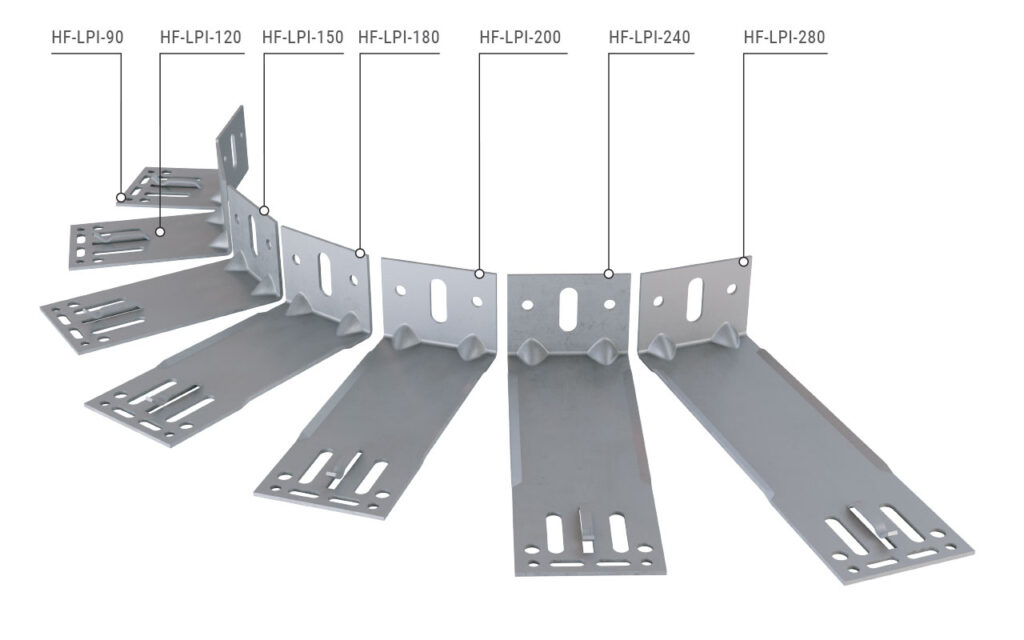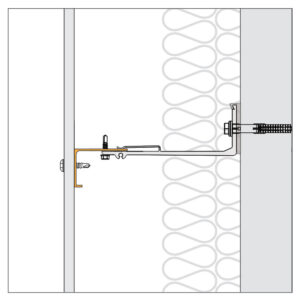Hammer Energy presented a new solution for façade photovoltaics system at Key Expo in Rimini
Hammer Energy presented an interesting innovation at the Key – The energy transition expo in Rimini from 5 to 8 March 2025: a façade photovoltaics structure system entirely conceived and produced in Italy, in the Montegrosso d’Asti factory.

The façade photovoltaics system: from design to solution
The façade photovoltaics system was developed in 2024: the Hammer Energy solution combines Hammer’s experience in ventilated façade structure systems and technical know-how in the field of renewable energy.
“For us, the project is the meeting and synthesis of two worlds and was born from listening to our customers who build façades and our customers who build photovoltaic systems,” says Matteo Campagnoli, Hammer’s sales and marketing director.
Façade photovoltaics is an emerging technology that integrates photovoltaic panels on the vertical surfaces of residential or industrial buildings. It is a technology that offers several advantages: for instance it maximises the space dedicated to solar panels on the building, particularly in urban areas; moreover, façade-integrated panels allow architects to realise solutions with an innovative and pleasing aesthetic and can decrease the amount of heat entering the building.
Bu thow does the Hammer Energy solution work technically? Matteo Campagnoli speaks again.
“The Hammer Energy façade photovoltaics system is a complete solution comprising mullion profiles, transverse profiles, brackets for anchoring the structure to the wall, brackets (shelves) and clamps for fixing the panels. The system is made almost entirely of aluminium. The original idea was centered on a hook and adjustable bracket system, but was later superseded by the introduction of new design elements.
The system can be anchored to the outer wall of the building with two different types of brackets: the designer can choose between stainless steel or aluminium brackets, depending on the specific requirements of the project.

The brackets differ not only in material, but also in form factor. The designer can therefore choose from a wide range of brackets, which allow solar panels to be spaced from the wall up to a maximum of 280 mm.
Their holes and slots are designed for maximum flexibility in creatingfixed and movable points. All brackets are equipped with internal pockets through which the mullion profile can be easily installed, using a snap-in mechanism.

The upright profiles are available in two different sections (T- and L-shaped), to which the transverse profiles are fixed, and are supplied in bars of two standard lengths, 6000 mm or 6500 mm, or in customised lengths.
The panel is fixed to the substructure with our aluminium shelves. The shelves engage on the transverse profiles with a screw expansion mechanism. Each panel rests on two shelves at the bottom, which are designed to optimally support the weight of the solar panel.
The shelves, therefore, contribute to the statics of the structure as they ensure that the weight of the photovoltaic panels positioned higher up on the façade does not bear on the lower panels of the same column.
Finally, the fastening of the photovoltaic panels is completed with our HE-MIR (intermediate clamps) and HE-MTR (end clamps), available in the two traditional surface finishes, natural or black oxidised aluminium. However, we do not exclude that in the future there may be market demand for other surface finishes, which Hammer Energy is able to produce in the entire RAL range.
The main strength of our solution is the ease with which the installer can replace even a single solar panel in case of need: Hammer Energy, thanks to the presence of the brackets, allows only one panel to be removed at a time, and not the entire column of panels as is the case with the most common systems on the market today. Thus, the installer can carry maintenance on by dismantling the single damaged panel; the other panels remain in place thanks to the shelves: the installer saves time and acts only where necessary, as is now the practice in acrobatic construction.
Hammer Energy façade photovoltaics system is also simple to purchase and assemble because it consists of a limited number of components.
The Hammer Energy solution will be further perfected as its technician are working with the aim of achieving perfect integration of the photovoltaic panels in BIPV (Building Integrated Photo Voltaic) mode; as a result, it will be possible, with a single structure, to fix both the photovoltaic panels and other types of cladding, such as Alucobond® cassettes and ceramic panels.
Also with this in mind, the system was tested in February 2025 at a third-party certification body. During the Key – The Energy transition expo 2025 in Rimini the exhibition visitors were able to touch and experience a mockup of the system on the Hammer Energy stand.
Click on the video to see our photovoltaic façade structure system:
